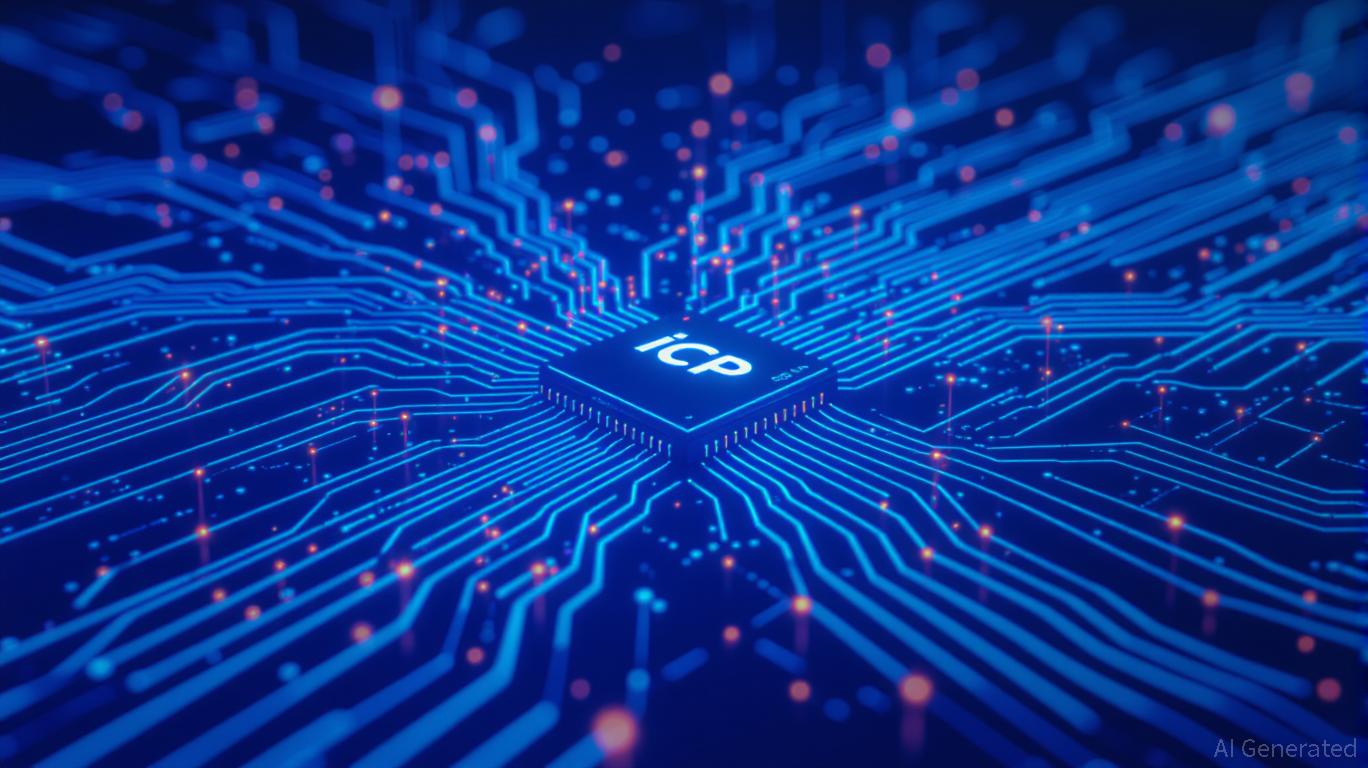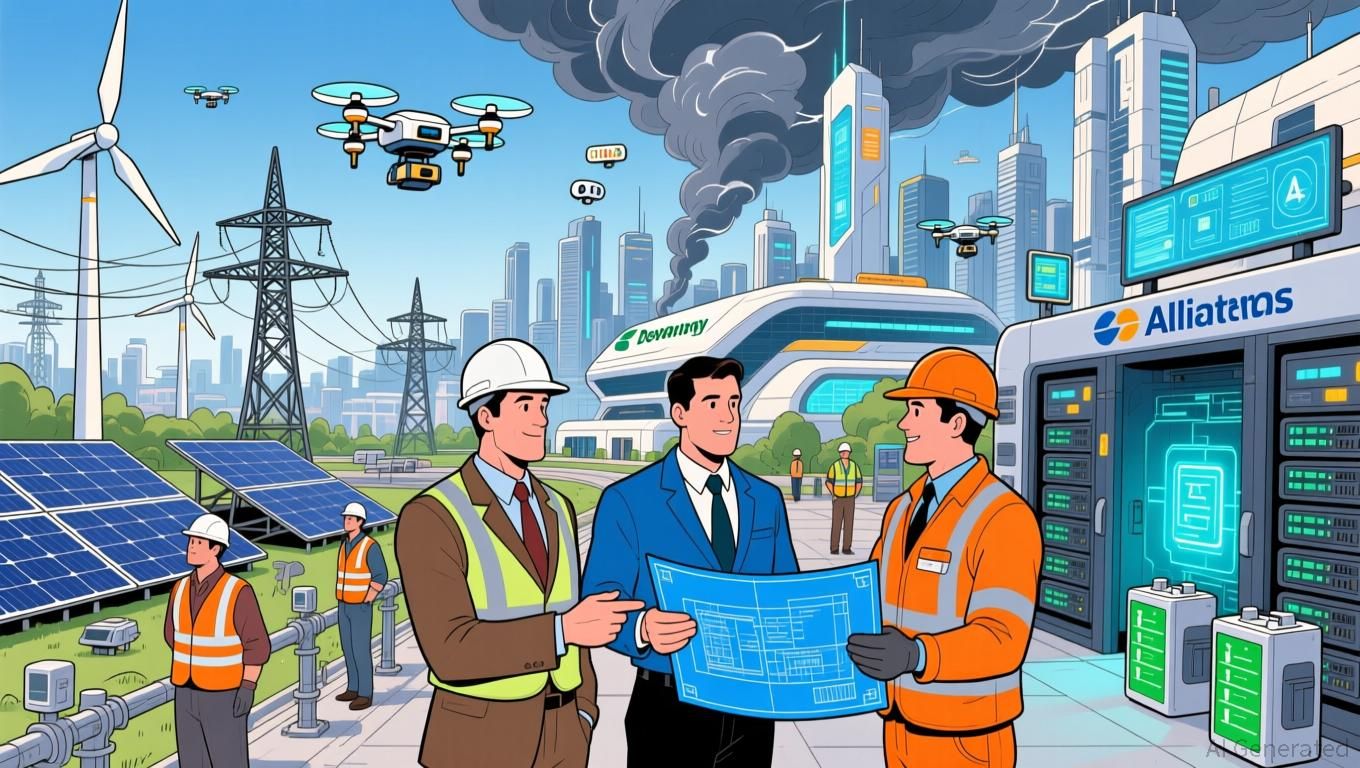ICP Network's Rapid Expansion in November 2025: How Institutional Interest in Decentralized Web Infrastructure Impacts Investment
- ICP surged 385% in Nov 2025 as institutional adoption accelerated via Microsoft/Azure partnerships and AI-driven Caffeine platform. - DeFi TVL hit $237B by Q3 2025, driven by real-world asset tokenization and Neuron Fund governance incentives. - Challenges include 22.4% Q3 dApp engagement drop and unconfirmed Coinbase Launchpad rumors, amid regulatory compliance demands. - Institutional traction validates ICP's enterprise blockchain potential but exposes volatility risks in TVL, DApp activity, and market
Institutional Adoption: Driving Expansion
Institutional interest in the ICP Network accelerated throughout 2025, fueled by key partnerships and technological progress. DFINITY, the organization behind ICP, established collaborations with
One major milestone in Q3 2025 was the debut of Caffeine, an AI-based platform that streamlines Web3 development using natural language and visual interfaces. This breakthrough has made blockchain app development more accessible, drawing in both individual and institutional developers. The launch of Caffeine coincided with a 30% jump in ICP’s price, as observed by Bitget, and a 56% single-day spike after the announcement, according to a

Institutional Investment and DeFi Expansion
Significant institutional funds have entered the ICP ecosystem, particularly through decentralized finance (DeFi) channels. By the third quarter of 2025, ICP’s total value locked (TVL) in DeFi reached $237 billion, reflecting increased confidence in the network’s capacity for real-world asset (RWA) tokenization and stablecoin creation, as detailed in a
The Neuron Fund of the ICP Network, introduced in October 2023, has further encouraged institutional involvement by decentralizing governance and offering rewards to token holders. Allocations such as the 30,000 ICP granted to ICExplorer for development in Q3–Q4 underscore a dedication to ecosystem advancement. These resources support initiatives like the DEX Monitoring & Alert Bot and the AI-Driven dApp Development Toolkit, which improve data analysis and simplify dApp deployment, as outlined in an
Obstacles and Prospects
Despite these achievements, some hurdles remain. DApp usage on the ICP Network dropped by 22.4% in Q3 2025, raising concerns about user engagement and the challenge of turning institutional investment into active participation, as mentioned in an
Regulation is also a significant factor. As DeFi adoption rises, institutional investors are placing greater emphasis on compliance. ICP’s collaborations with regulated organizations like HashKey and Kraken—which focus on advancing tokenized RWAs—strengthen its position, as
Investment Outlook
For those considering investment, the ICP Network offers a unique example of the intersection between AI, blockchain, and institutional infrastructure. Its success in forming alliances with leading cloud providers, launching AI-powered development platforms, and growing DeFi TVL points to a solid base for future growth. However, fluctuations in DApp activity and recent price drops (down 11.03%, according to a
Institutional momentum can be both beneficial and risky: while it confirms ICP’s promise, it also increases vulnerability to market swings. Investors should keep an eye on metrics like TVL, DApp usage, and the rate of enterprise partnerships. If the rumored Coinbase Launchpad listing is confirmed, it could trigger the next wave of growth.
Summary
The ICP Network’s rapid ascent in November 2025 highlights the growing influence of decentralized infrastructure among institutional players. Through the use of AI, strategic alliances, and DeFi advancements, ICP has established itself as a formidable force in the enterprise blockchain arena. For investors, the challenge is to balance optimism with prudence—recognizing the revolutionary potential of decentralized web technology while staying alert to market and regulatory changes.
Disclaimer: The content of this article solely reflects the author's opinion and does not represent the platform in any capacity. This article is not intended to serve as a reference for making investment decisions.
You may also like
Lighter Secures $68 Million to Drive Institutional DeFi Expansion Despite Market Hesitancy
- Lighter secured $68M in a new round led by Founders Fund and Ribbit Capital, valuing it at $1.5B to boost DeFi trading infrastructure. - The funding aligns with a broader crypto VC surge, including Ripple's $500M and Lava's $200M, highlighting institutional interest in blockchain finance. - CEO Vladimir Novakovski emphasized scaling infrastructure with both equity and token subscriptions to enhance institutional-grade trading solutions. - Despite market caution, DeFi protocols like Lighter attract invest
JPMorgan and DBS Establish Unified Cross-Chain Protocol for Institutional Transactions
- JPMorgan and DBS develop blockchain framework for cross-chain tokenized deposit transfers, aiming to set institutional payment standards. - The framework links DBS Token Services with JPMorgan’s Kinexys, enabling 24/7 real-time settlements across public and permissioned blockchains. - It addresses cross-border transaction demands, reducing fragmentation as global banks adopt tokenization. - Overcoming interoperability challenges could redefine institutional liquidity access and market reach.

JPMorgan and DBS Develop Cross-Chain Bridge to Compete with Stablecoin Leaders
- JPMorgan and DBS Bank launch cross-chain framework for real-time tokenized deposit transfers between institutional clients, bypassing traditional payment systems. - The "interoperability highway" enables 24/7 settlements across public/private blockchains while maintaining consistent token value, expanding cross-border transaction capabilities. - As 1/3 of global banks explore tokenized deposits, the partnership challenges stablecoin dominance by offering institutional-grade cross-chain solutions with red
AI's Growing Demand for Power Pushes the Energy Industry Into an Intense Sustainability Competition
- Energy and tech sectors collaborate to address AI's surging energy demands through sustainable computing infrastructure and efficient GPU solutions. - Devon Energy and Alliant Energy boost capital spending on grid modernization and storage, aligning with AI-driven power needs while maintaining shareholder returns. - NVIDIA advances open-source GPU efficiency via Nova driver, yet faces market volatility as AI sector grapples with financial risks and regulatory pressures. - Industry challenges include bala
